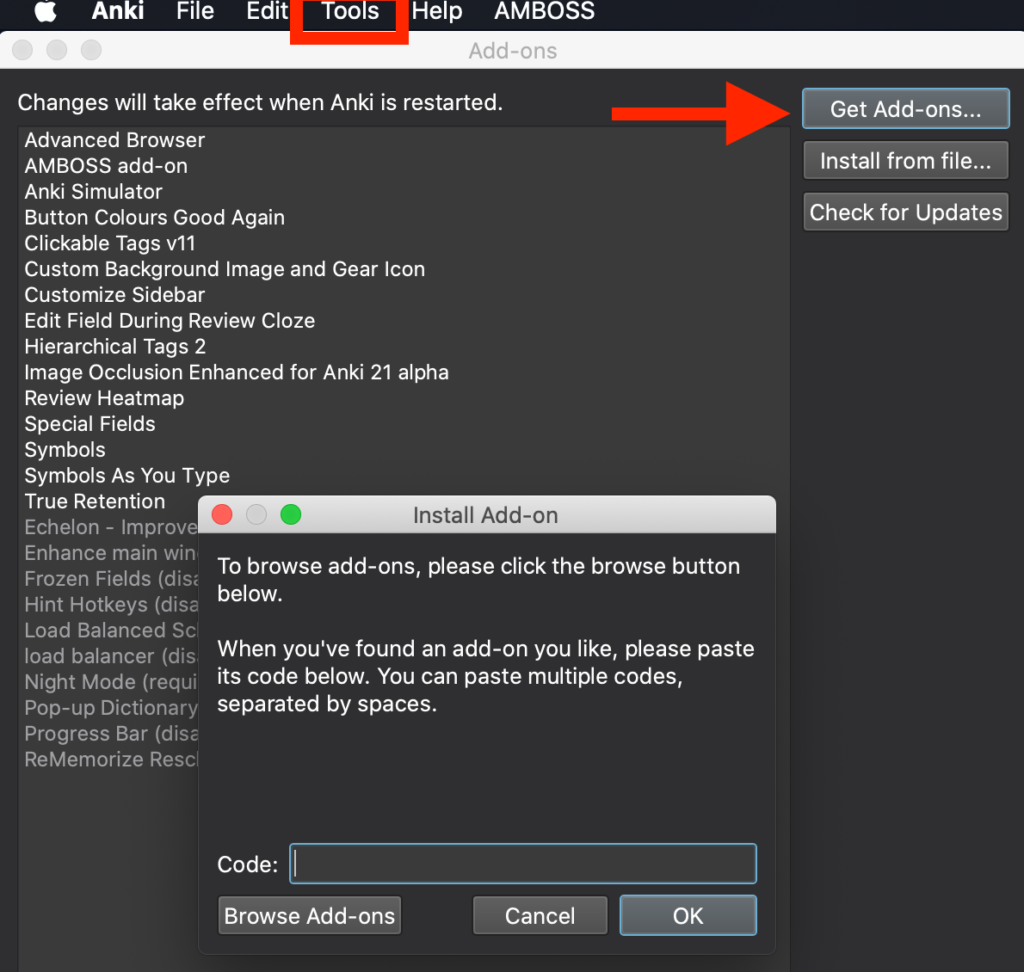
- #Anki settings two session language how to#
- #Anki settings two session language full#
- #Anki settings two session language trial#
What number you set this to depends on how hard your cards are. It’s good to limit this to an amount you can realistically do. New cards/day is the number of new cards you will get each day. I find doing this with a sheet of paper in front of me and jotting down the topic structure as I go is really helpful. If your reviewing decks are smaller (circa 50-100 cards), and cover a single topic, then you might want to ‘show new cards in random order’, because then you’ll learn them better, When they’re mixed you have to piece together the topic for yourself, rather than it being spoonfed to you. For huge decks probably you want to ‘show new cards in order added’. It’s better to get the majority out of the ‘learning’ pile with these 3 steps, and then use the ‘hard’ button to deal with the trickier cards which you don’t retain as well.įor Order you have a choice. NB For the longest step, I tried having a 4th, extra 10 day (ie 14400 minutes) step as a catcher, but found that it made the cards pile up too much without helping my learning.If you get it wrong then the card just goes back to the first step. You want this long enough that you’re just about to forget it. 4 days checks you can remember the card days after you first see it.I’ve found 30 minutes is about right for me to be about to forget the card when it pops back up. 30 minutes is the last time you’ll view the card that day – you can experiment with making this 25 or 35, it depends how long your learning sessions are.10 minutes is very soon, which checks the card hasn’t gone straight in one ear and out the other.10 30 5800 means you will see a card you mark ‘good’ after 10 minutes, and then again if you mark it ‘good’ after 30 minutes, and then again if you mark it good after about 4 days. It sets how many times you have to get a card right before you move it out of your ‘learning’ pile, and into the general ‘reviewing’ pile.

Steps is the most important thing to change from the defaults. Once you have made your group click manage>Set for all subdecks, to sync the settings across all your decks. If you have different kinds of decks you might want different settings (I have a ‘Ticking Over’ one), and this lets you do that. You might want to create a new Options group, by clicking manage>add, and giving it a name. To reach Settings, click on the little cog to the right of a deck and click ‘options’.
#Anki settings two session language how to#
Combine this with the reviewer_progress_bar add on (see the bottom of this article for how to do this) for the best set up. Doing so means you don’t get a clue as to whether you’ve seen the card before when you review it (less clues = better learning). Make sure to un-tick ‘show remaining card count during review’. The Scheduling section however is important.

Preferences has 4 tabs, and the Basic, Network and Backups sections are personal preference.
#Anki settings two session language full#
If you have very detailed questions, you can probably find the answer in the full Anki Manual. I’m only going to focus on the settings which will make a difference to your learning, and I suggest you copy the choices I have made in my screenshots below.

The aim is to manipulate the forgetting curve to meet your learning goals.
#Anki settings two session language trial#
Below I give the choices I have made, both from the trial and error of using Anki most days for the last 3 years, and from a bit of research into the psychology of memory. Before doing anything else, you’ll want to change Anki’s default settings.


 0 kommentar(er)
0 kommentar(er)
